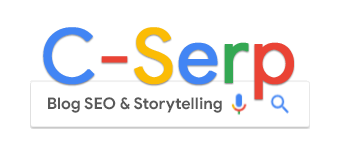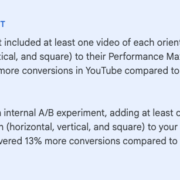How Google Ads’ AI tools fix creative bottlenecks, streamline asset creation

Advertisers are facing mounting pressure to produce high-quality images and videos at scale.
Google Ads’ new AI-powered tools aim to ease that burden, streamlining asset creation and addressing the creative bottlenecks that slow campaign performance.
From creative fatigue to AI fix: Google’s plan for scalable visual content
We’re constantly told that video and lifestyle imagery are an important part of the buyer’s journey, and the statistics, along with our own consumption habits, confirm this.

To address this, marketers must create assets that are not only visually engaging but also captivating enough to hold audience interest and inspire actions.
Most advertisers know they should be prioritizing creative strategies to stand out from the crowd.
Yet, producing a consistent stream of effective creative, especially video, can drain resources, time, and budget, often leading to creative fatigue and missed opportunities for advertisers.
And who wants to miss out on boosting Father’s Day sales and have to report that to the CMO?

Google sought to address this during Google Marketing Live, when it introduced AI-driven video and image creation tools.
Developed to optimize and scale visual asset production for brands, these innovations address the increasing need for effective upper funnel marketing assets.
The tool updates are not just incremental changes, they represent a potential transformation in how advertisers can:
- Approach the development of creative assets.
- Ensure alignment with brand standards.
- Engage audiences within increasingly dynamic and complex visual environments.
But as with any AI technology tool, critical questions emerge:
- How will these tools truly impact workflows?
- What are the implications for brand control and representation?
- And what do the industry’s leading paid search professionals – whose insights we’ll share directly – think about this AI shift?
Transforming workflows: From manual tracking to centralized scale
Scaling creative production is becoming increasingly complex. So, can these new tools actually help streamline workflows?
Historically, managing campaign assets has been a painful, manual process.
Despite countless hours spent creating asset tracking sheets and exchanging hundreds of emails to communicate and collect assets, I can’t count the times I went to launch a Performance Max campaign only to realize I was missing image sizes or videos.
This often forced me to pull images directly from a client’s website, which is far from ideal.
When juggling Performance Max, Demand Gen, and YouTube campaigns within the same account, a recurring problem surfaced: the need to use identical images and videos across campaign types.
This made it incredibly tough to determine which campaign was delivering which creative.
Clients emailing screenshots of ads asking, “Where is this ad coming from?!” on a Sunday afternoon certainly didn’t help.

Ideally, each campaign type would benefit from its own tailored creative assets, ensuring clear performance attribution and maximizing the marketing funnel’s effectiveness.
But there simply aren’t enough unique assets to go around, forcing us to recycle.
This ongoing challenge has become a major bottleneck for advertisers.
That’s why the upcoming Asset Studio in Google Ads is so promising.
It’s designed to centralize and simplify asset creation, helping marketers generate more visuals quickly, efficiently, and without sacrificing quality.
It’s important to understand, this isn’t only about more images and videos.
It’s about transforming the entire workflow of asset collection and management.
This potentially means an end to the frantic scrambling for unique images and videos.
Features like “Generated for you” campaign ideas and Brand Profiles in Merchant Center help keep brand identity consistent and make managing assets easier.
This reduces repetition and lets marketers focus more on each campaign’s specific goals, resulting in:
- More tailored creative.
- Clearer performance attribution.
- Far fewer emails from clients asking about the origin of ads.
What are the implications for brand control and representation?
Powerful new AI tools bring important concerns about brand control and how a company is represented.
Google’s AI image and video tools, like Veo’s image-to-video transformation and outpainting, make creating assets easier but also raise key questions for advertisers.
Since brand identity is a company’s most valuable asset, businesses worry if automated content can truly match their style and values.
Using creative that doesn’t follow brand rules can hurt a brand’s reputation and upset brand managers and legal teams.
The ability to create “in action” product images and turn static pictures into videos is a big breakthrough for ads.
But brands need to make sure these AI-made visuals match their lifestyle image and stay true to their brand identity.
Advertisers worry about giving full creative control to algorithms, fearing off-brand content might be used by mistake.
Google addresses this with tools like Brand Profiles in Merchant Center, which help retailers keep their brand consistent across Google.
Plus, features like the upcoming Asset Studio include human checks to ensure AI-generated content follows brand rules and is approved before it’s used.
This balances automation and brand control well.
Industry reactions to Google Ads’ AI innovations
The industry is watching closely, and leading paid search professionals offer nuanced perspectives on Google’s AI shift.
Julie Friedman Bacchini highlights the dual nature of these advancements:
- “AI-generated content is a double-edged sword. On one hand, it’s a major advancement that gives businesses – especially those with limited creative resources – greater flexibility and access to high-quality visuals without the need for constant photoshoots. Even large companies, surprisingly, often struggle with strong visual assets, so AI can be a valuable tool for anyone not front and center at events like GML.”
- “But there are real concerns. Will AI content be clearly labeled? Will consumers be able to tell what’s AI and what’s real? And as more of us use the same underlying technology, are we headed toward a world where everything starts to look and feel the same? While AI can make content creation easier and more scalable, its long-term impact on creativity and authenticity depends on how thoughtfully it’s used. Transparency and diversity will be crucial.”
Jeremy Krantz offers a pragmatic, yet hopeful, assessment of their current state:
- “The new image and video creation features in Google Ads show promise, but they’re still very much in their infancy. Right now, they feel more like early experiments than fully usable tools.”
- “That said, as AI continues to improve, I think we’ll see these features evolve into something genuinely useful for performance marketers – it’s just not quite there yet.”
Echoing the potential for democratizing creative resources, Harrison Jack Hepp, sees particular benefit for smaller businesses:
- “Asset Studio is especially interesting for small-medium size advertisers that don’t have access to the resources for creative that larger advertisers do.”
- “If Asset Studio can give these advertisers the ability to make their products stand out and generate more variations or create useable video assets, it opens up more advertising opportunities and gives them effective tools to compete with large brands.”
Where Google’s new AI creative tools live: A quick guide
To help cut through the confusion, here’s a quick overview of where Google’s new AI-powered creative tools are located or are rolling out:

Looking ahead: The future of AI in creative

This image powerfully shows why Google’s new AI tools are so critical: 83% of people use Google or YouTube daily.
With such widespread engagement, the integration of AI into creative production marks a pivotal moment for paid search marketing.
Producing creative at scale without losing quality saves time and money, allowing brands to invest in other key marketing efforts.
Google’s AI tools give businesses of all sizes a competitive edge:
- Large brands can run global campaigns while staying locally relevant.
- Midsize companies can stretch their budgets further.
- SMBs and solopreneurs gain affordable access to video and image assets.
By cutting production costs, these AI-driven tools level the playing field.
AI-powered image and video creation is still maturing, but future advances will bring:
- Real-time creative generation.
- Better understanding of brand nuances.
- Greater inclusivity in visuals.
These tools will get smarter, meeting users where they are.
Today’s creative often targets an ideal customer, but AI enables ads tailored to the right user at the right moment.
Google is becoming a unified marketing platform, and as creative becomes faster and more precise, ads will align closely with individual searchers’ intent and context.
Google’s AI video and image tools represent a major marketing shift toward faster, smarter, and more efficient creative tailored to a changing landscape.
While challenges like brand oversight remain, these innovations are directly addressing them. Already testing in the U.S., these features offer a more interactive Google experience.
Adopting these AI technologies is no longer optional for marketers aiming to elevate their campaigns – it’s essential.


